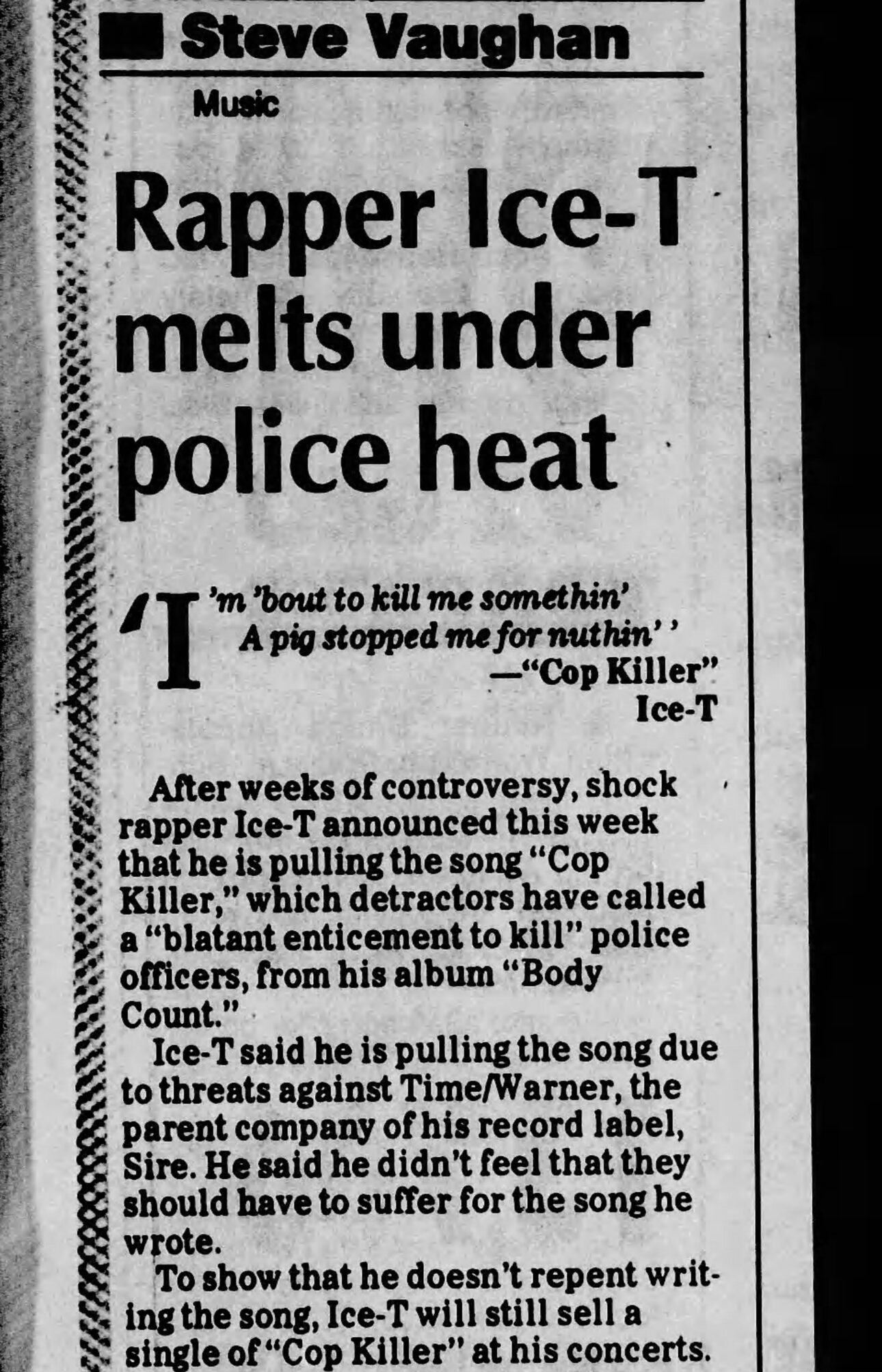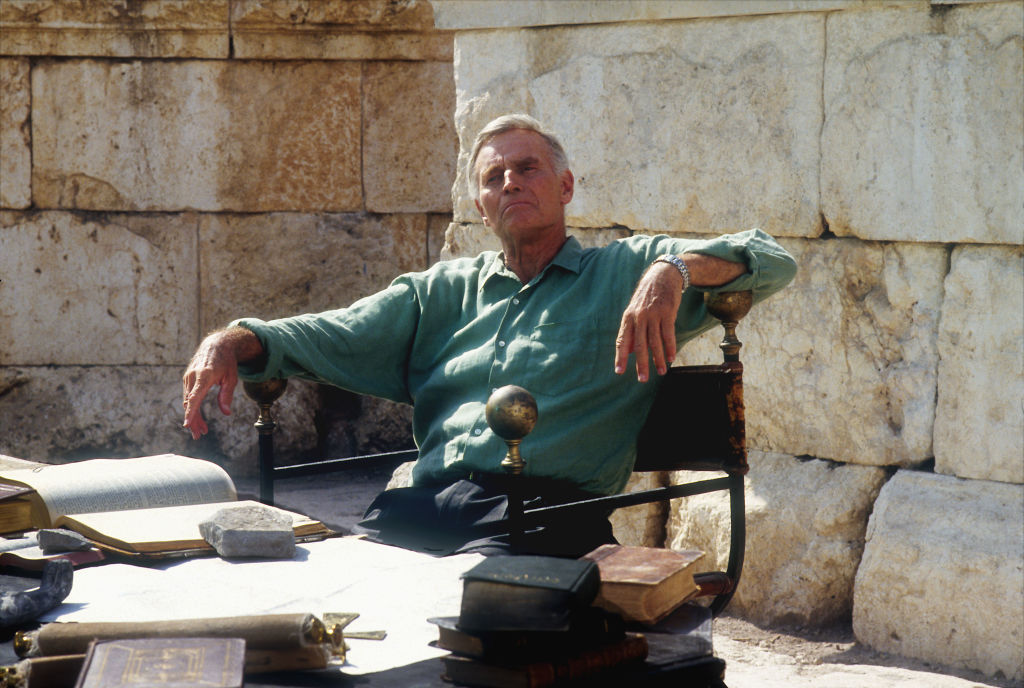“I knew there was gonna be trouble,” the DJ says, lifting his t-shirt to show what happened at the Run DMC gig. Tony’s t-shirt is way too big for him, so I’m standing here for fucking ever as he hauls up handfuls of fabric. Eventually I see a nasty pink whorled scar where someone knifed him outside the venue. He was seriously injured with organ damage.
“Fucking hell,” I say. “What the fuck is with people? It’s just fucking music.” I run my tongue over where my teeth got chipped at the Cult’s ’87 Electric tour, and still feel a twinge in my knee from some asshat I did battle with at Lubricated Goat. Or was it the Hard Ons? Who even remembers.
But Tony shakes his head. Like I don’t understand, yet he’s too war weary to explain that rap is different. That it’s more street. That it doesn’t have fans – it has crews. And crews get serious. Especially about other crews from other suburbs.
I start to say that Run DMC are a cartoon band—like the Beastie Boys but without the creativity—so the idea of hardcore violence at their gigs makes no sense. But what’s the point? The poor boy’s already been stabbed so why add insult to injury.
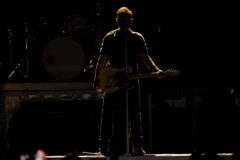
Also Read
SAME AS THE OLD BOSS
It’s worth mentioning, I guess, that the above conversation took place in the Australian city of Newcastle in the late ’80s, back when large numbers of white boys Down Under were cosplaying the Crips and Bloods. It was a little on the ludicrous side seeing freckled young fellas in do-rags accidentally stepping out of their unlaced sneakers while tugging at their huge pants to keep them up, all while calling each other n—-r.
But the violence associated with rap fans, when combined with the shock of a rampantly and obnoxiously infectious musical genre and an onslaught of associated graffiti, was sure a recipe for some spicy news coverage down in Oz.
So now that I’ve crossed the Pacific, I thought I’d take a look at some of the coverage I missed out on by not living Stateside during the rise of rap. Talk radio’s always the best—or at least it was until the internet turned the whole world into talk radio—but there’s still some interesting material to be found in the news archives. This isn’t a scientifically valid survey, but science is just your opinion anyway so have a nice day.
If you’re in a rush and need a fast hit, scroll down to the video of Charlton Heston dissing Ice-T (before serving some fresh lines of Tracy Marrow himself). It’s bizarrely compelling. But then head on back up here and follow the tragic tale of music’s lost Eden.
Innocent Beginnings
“MC Stable Bachelor”: rap’s early adopter in Miami
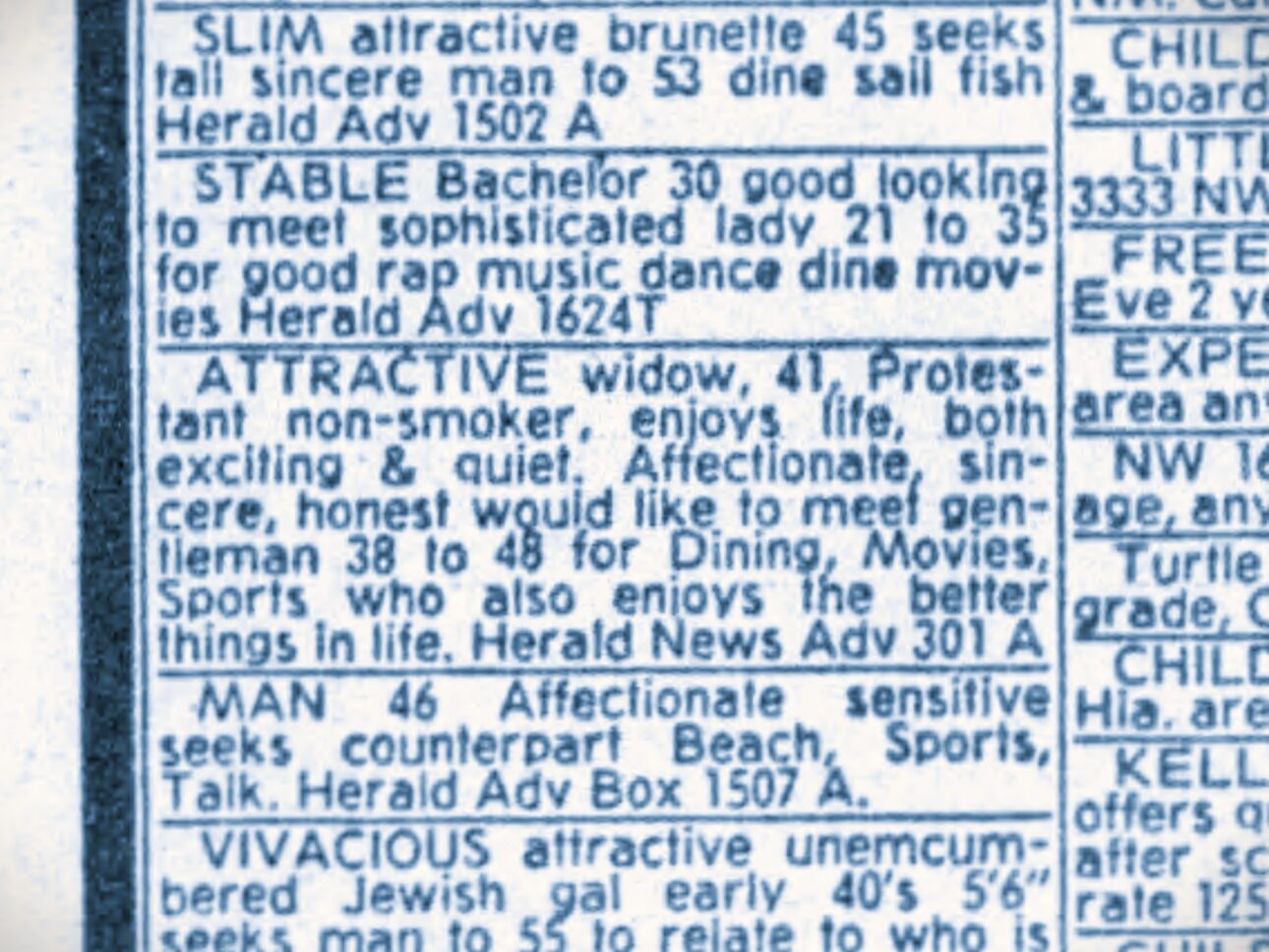
A new flavor of disco
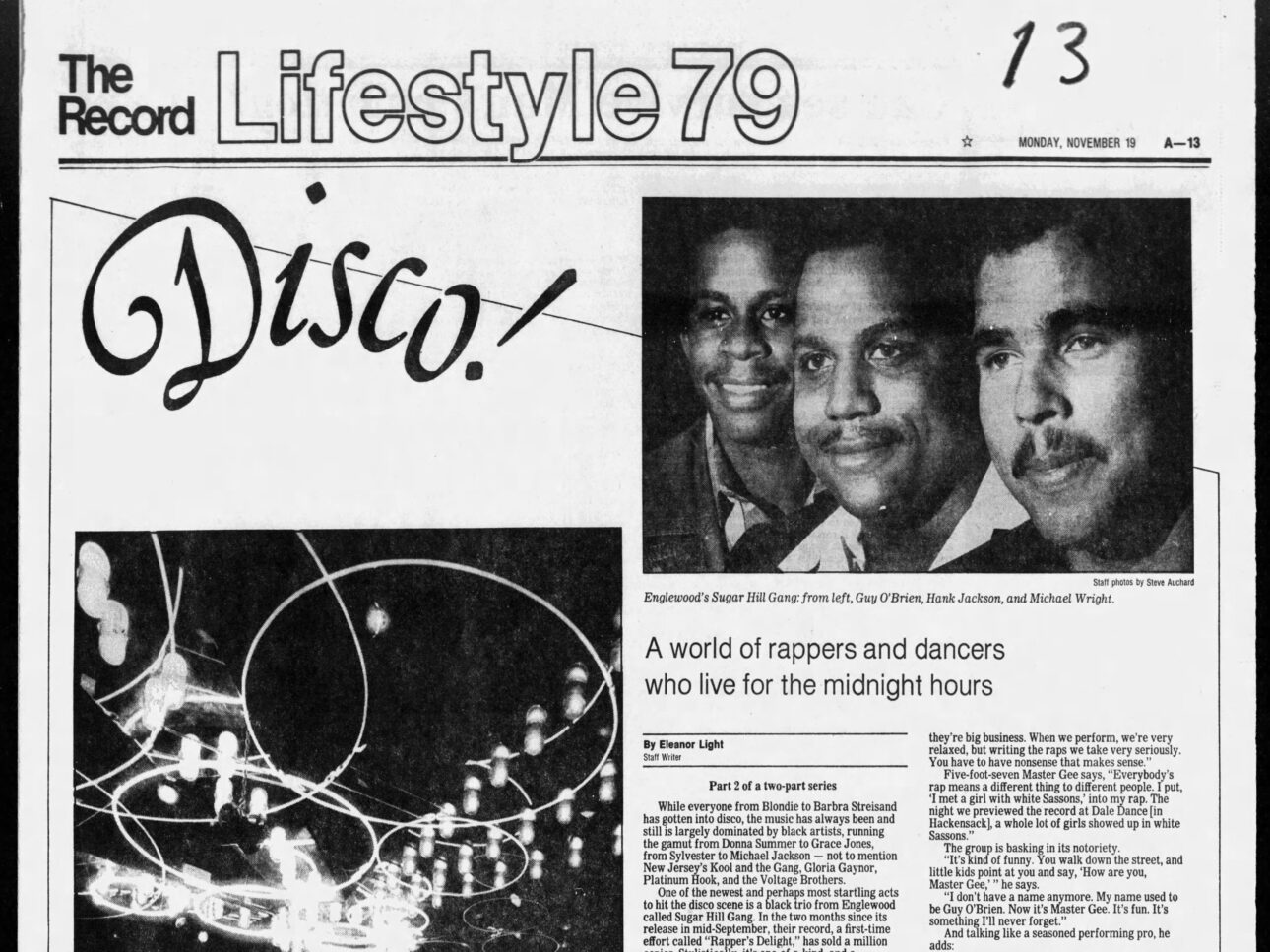
Entering the Top Ten (and moving in on Barba Streisand)
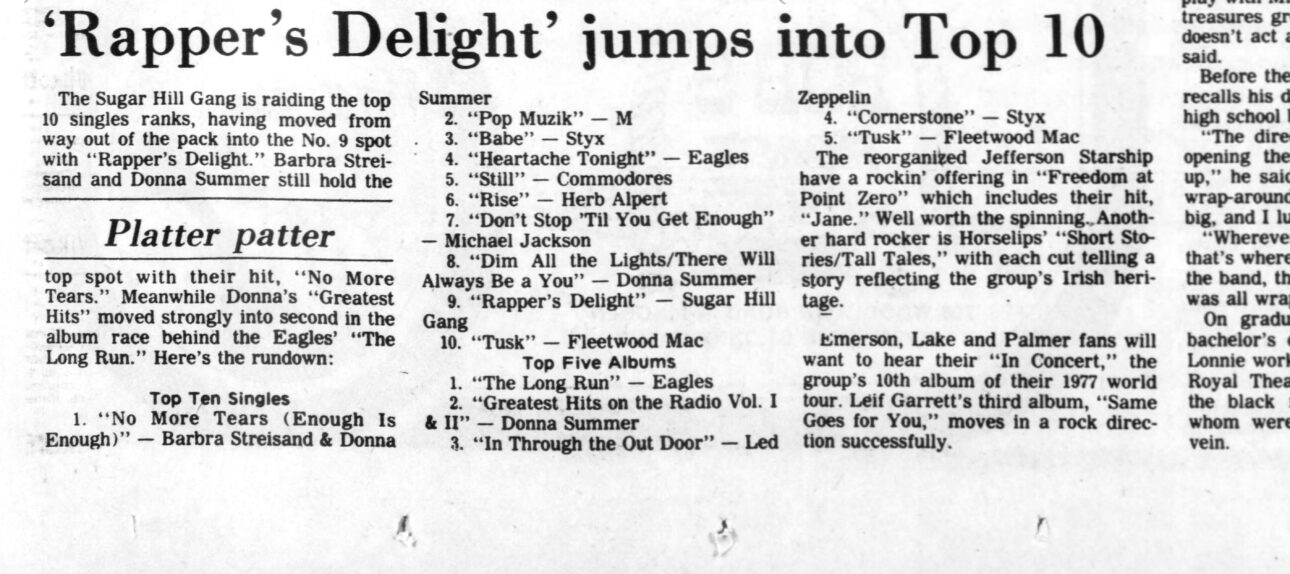
“Look for this to be a trend of sorts”
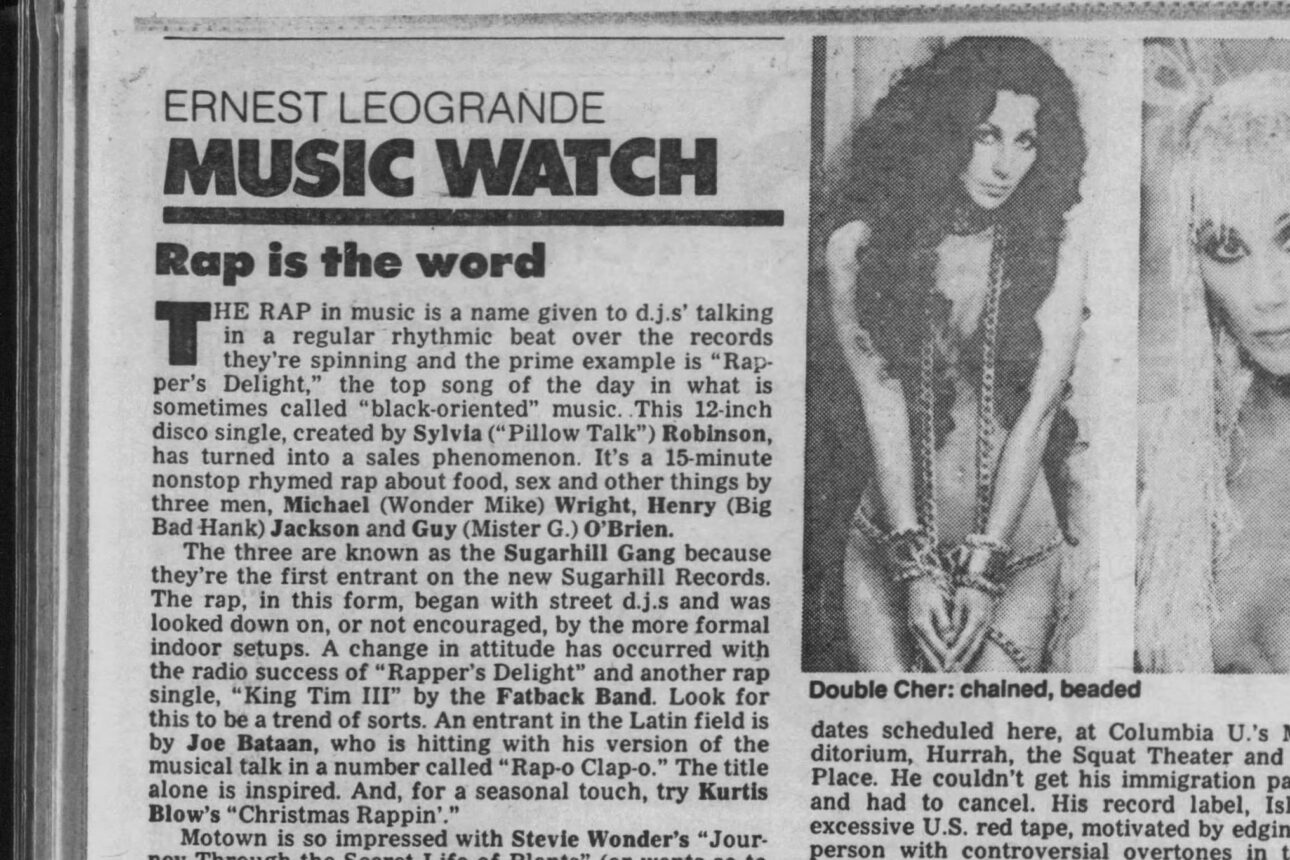
“Excellent brainwashing material for use by terrorist organizations”
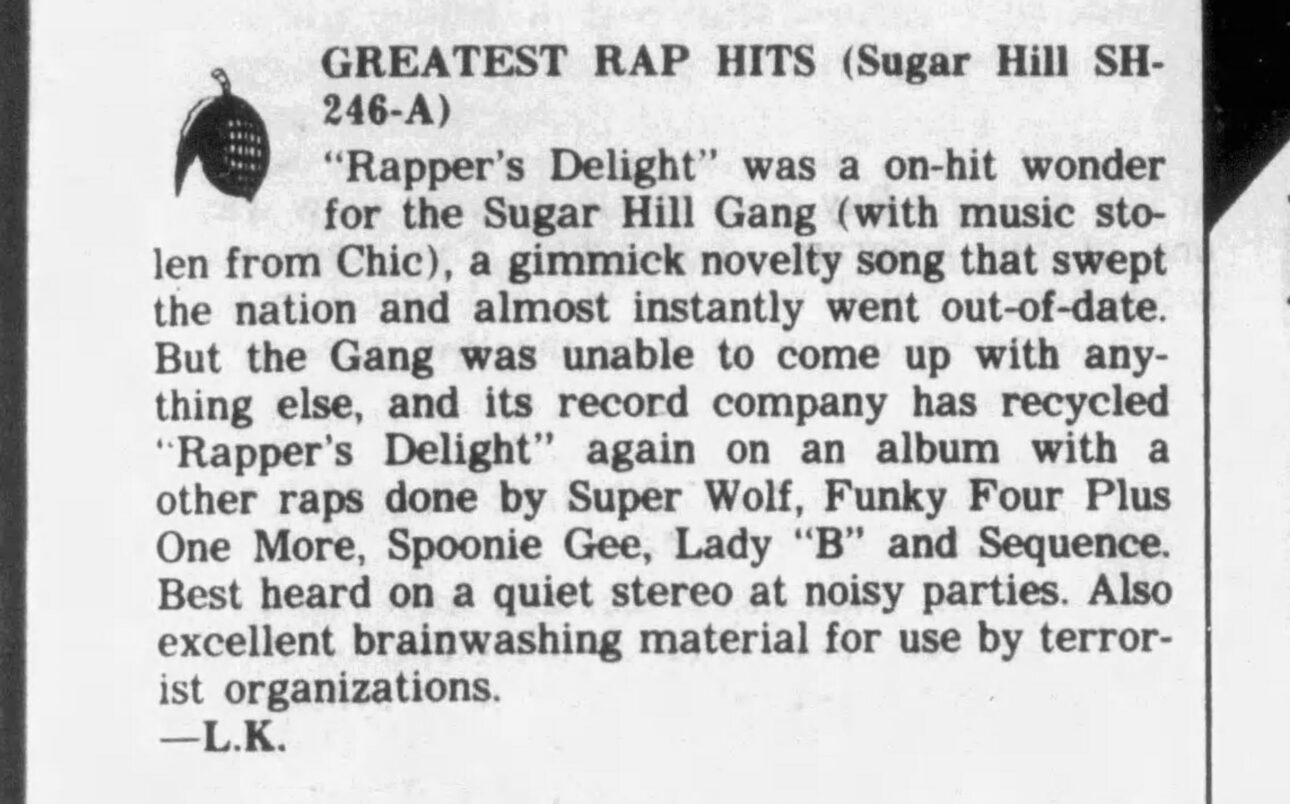
Grab some 12″ disco records
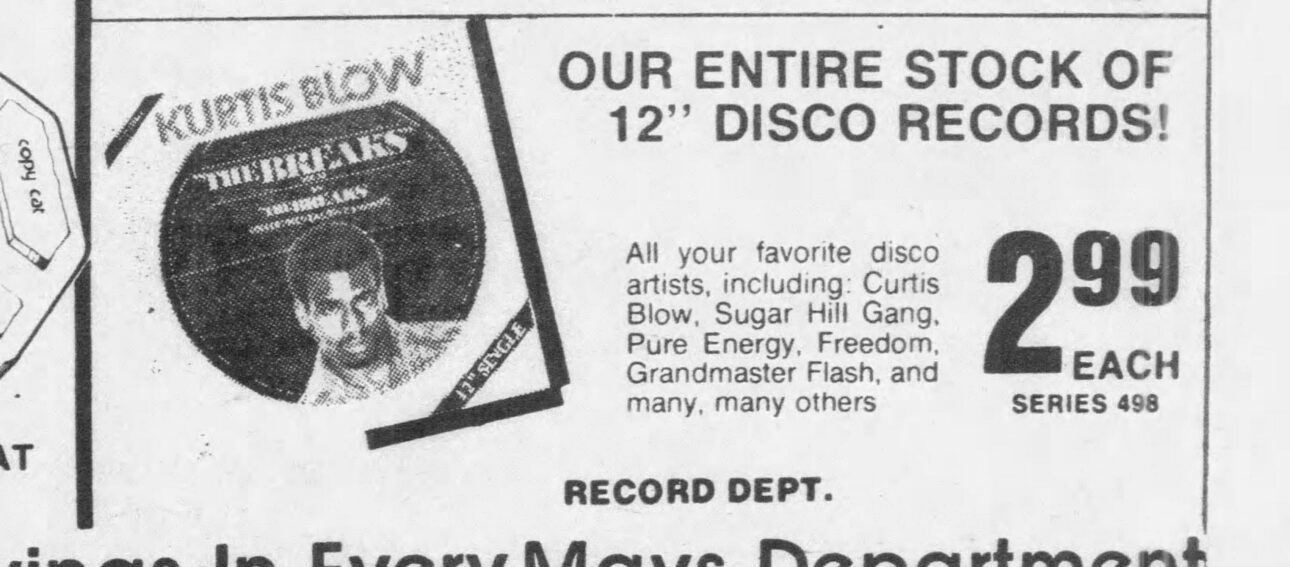
“The latest extension of America’s black music tradition”
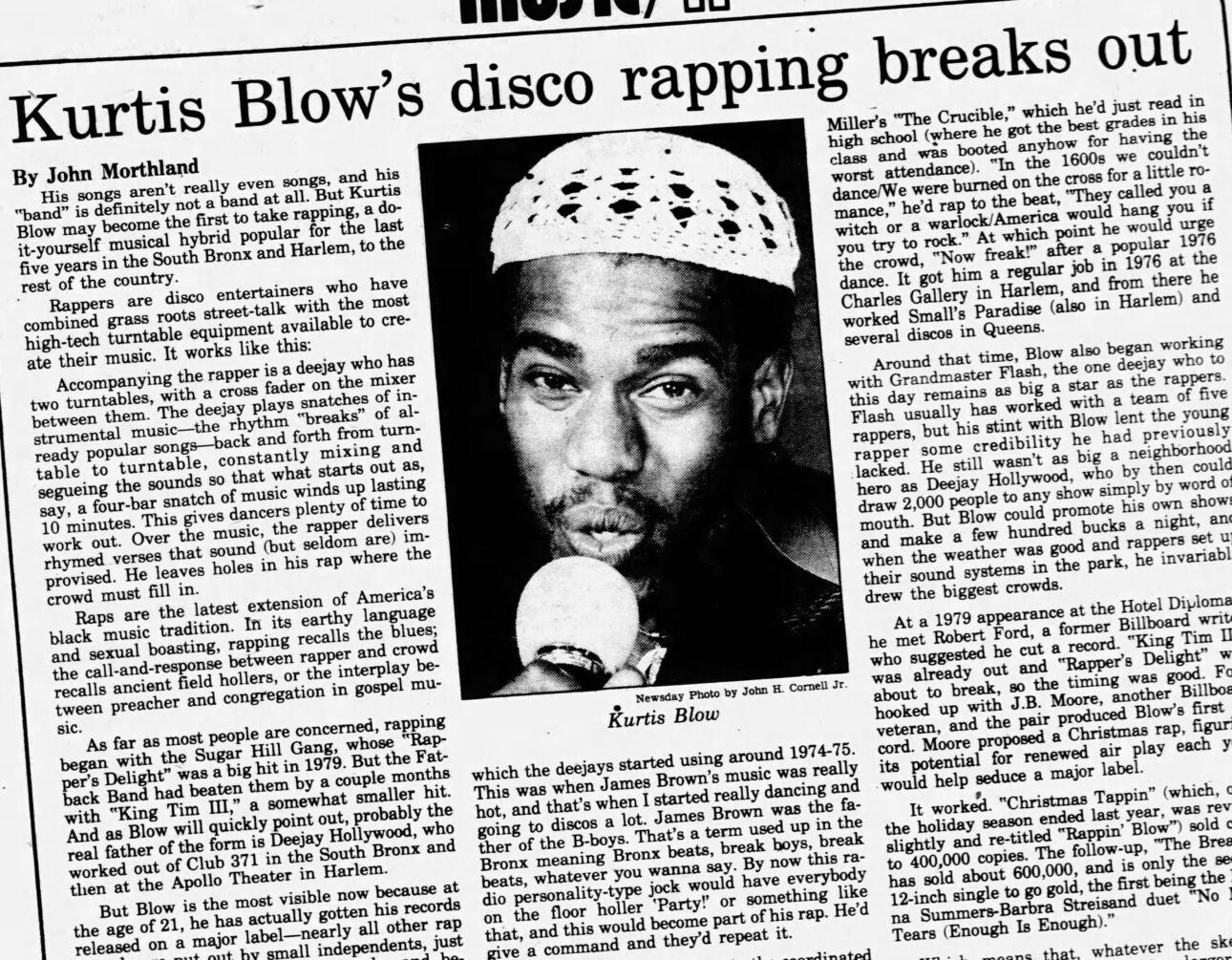
Clash fans in Manhattan “enraged” to see Black people on stage and racially abuse Grandmaster Flash in Manhattan
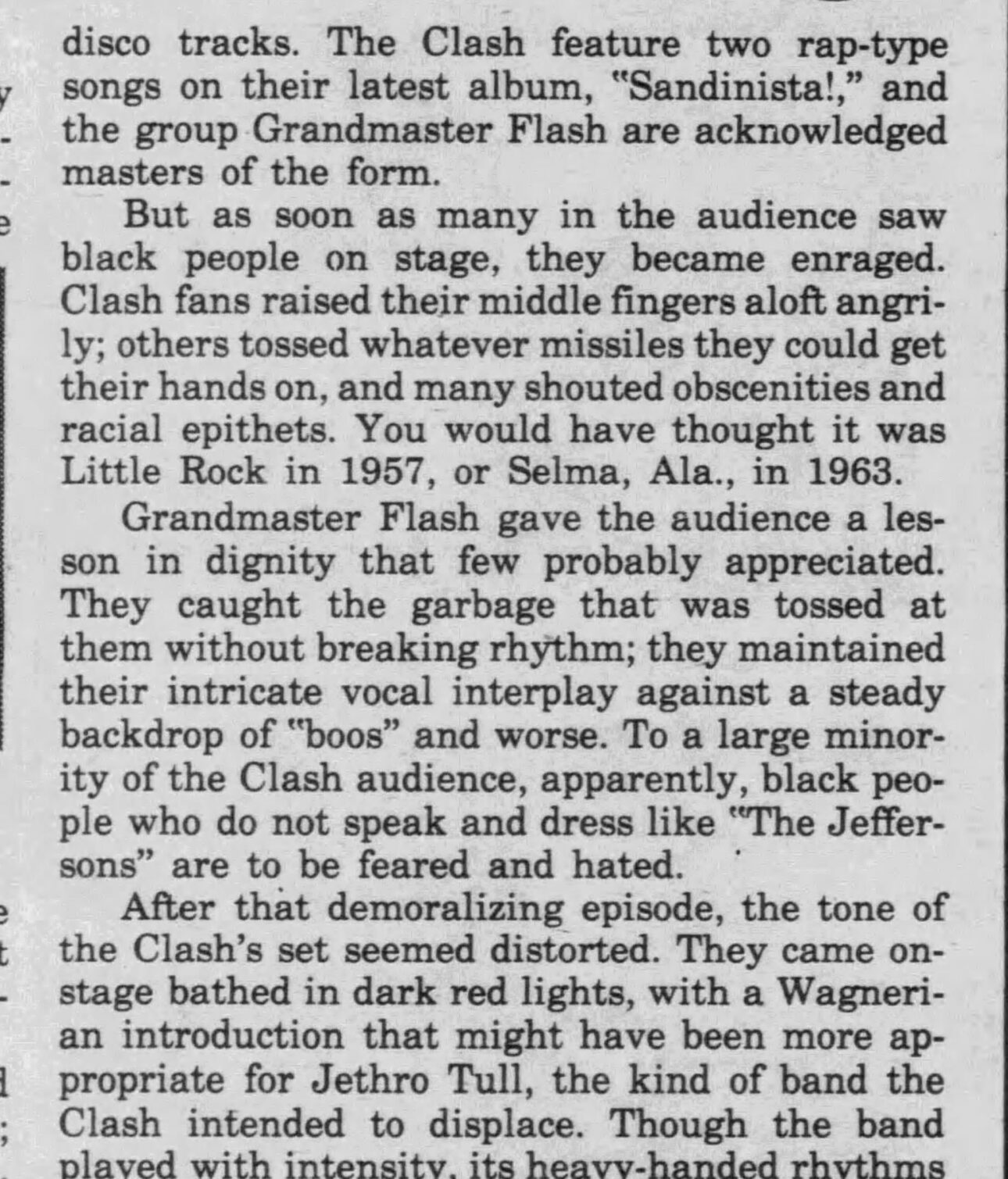
The novelty of rap has faded
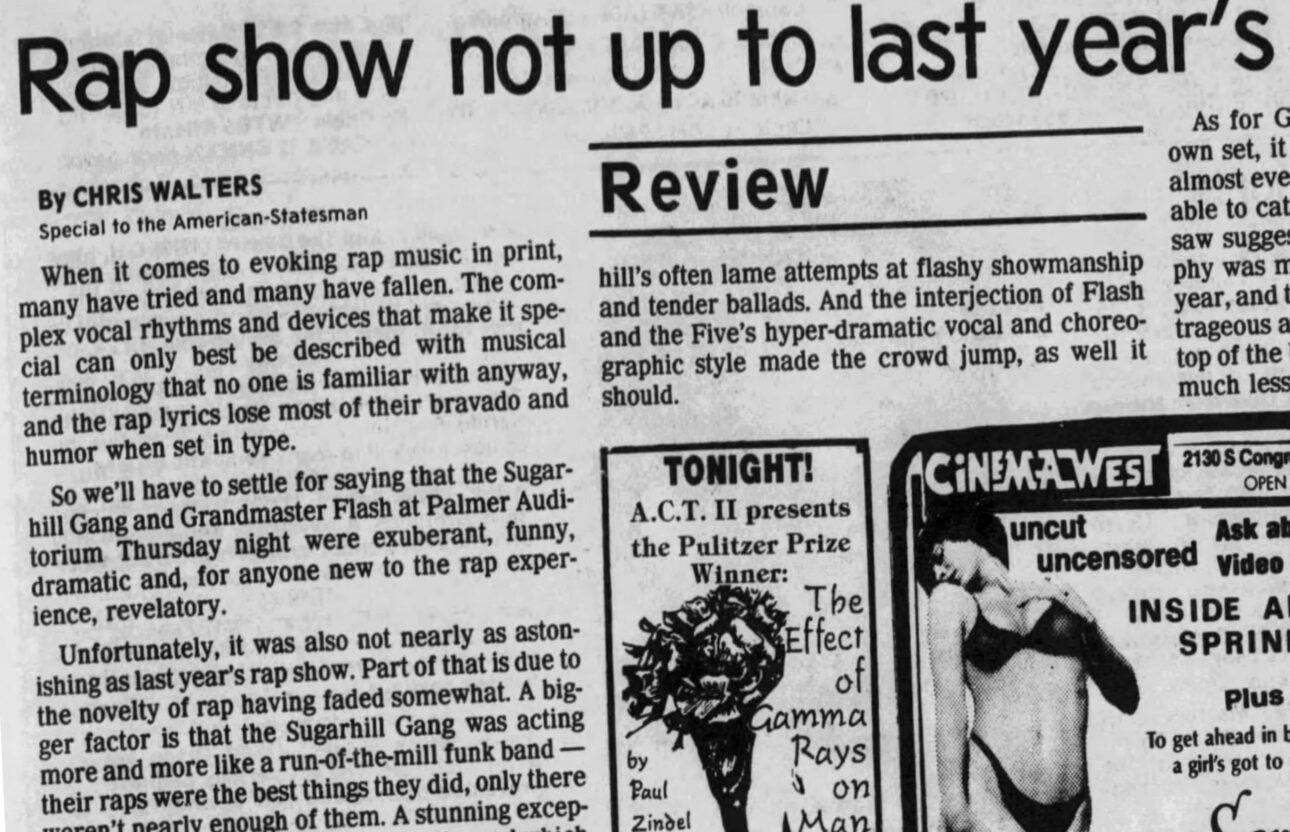
Africa Bambaata climbs ahead of Donna Summer, Aretha Franklin, Ray Parker Jr, and Stevie Wonder
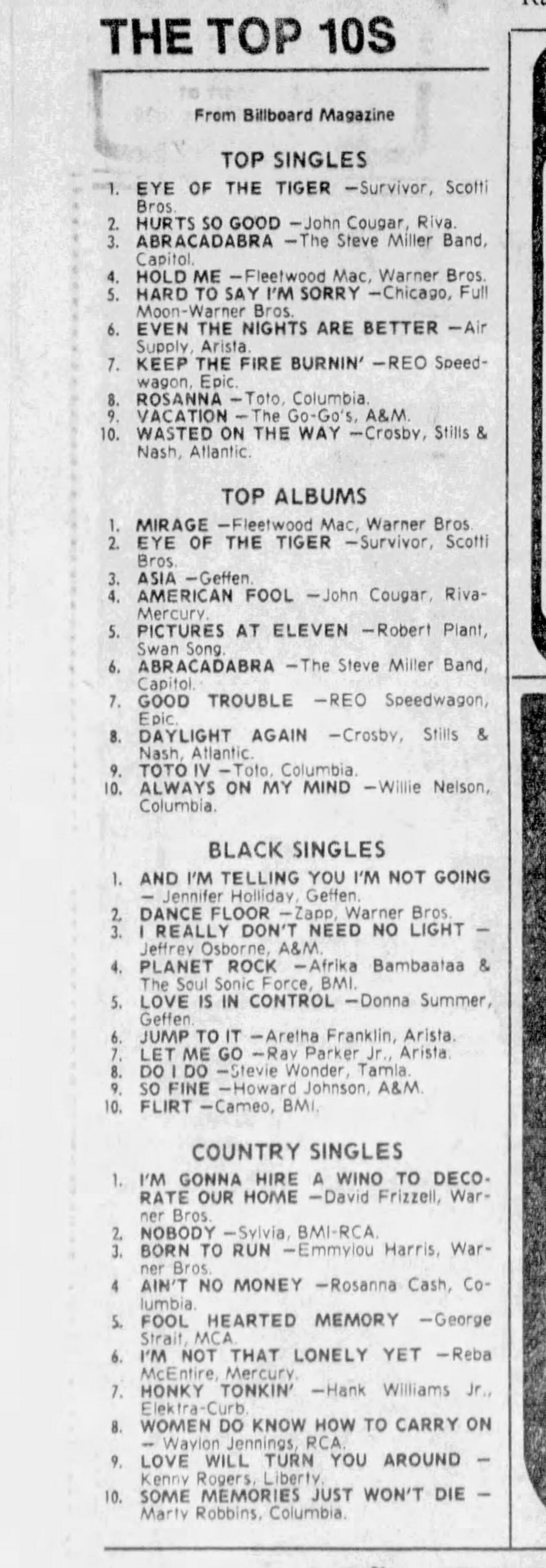
“One of the most daring and sobering hits since 1965’s ‘Eve of Destruction'”

A frightful look at desolation row
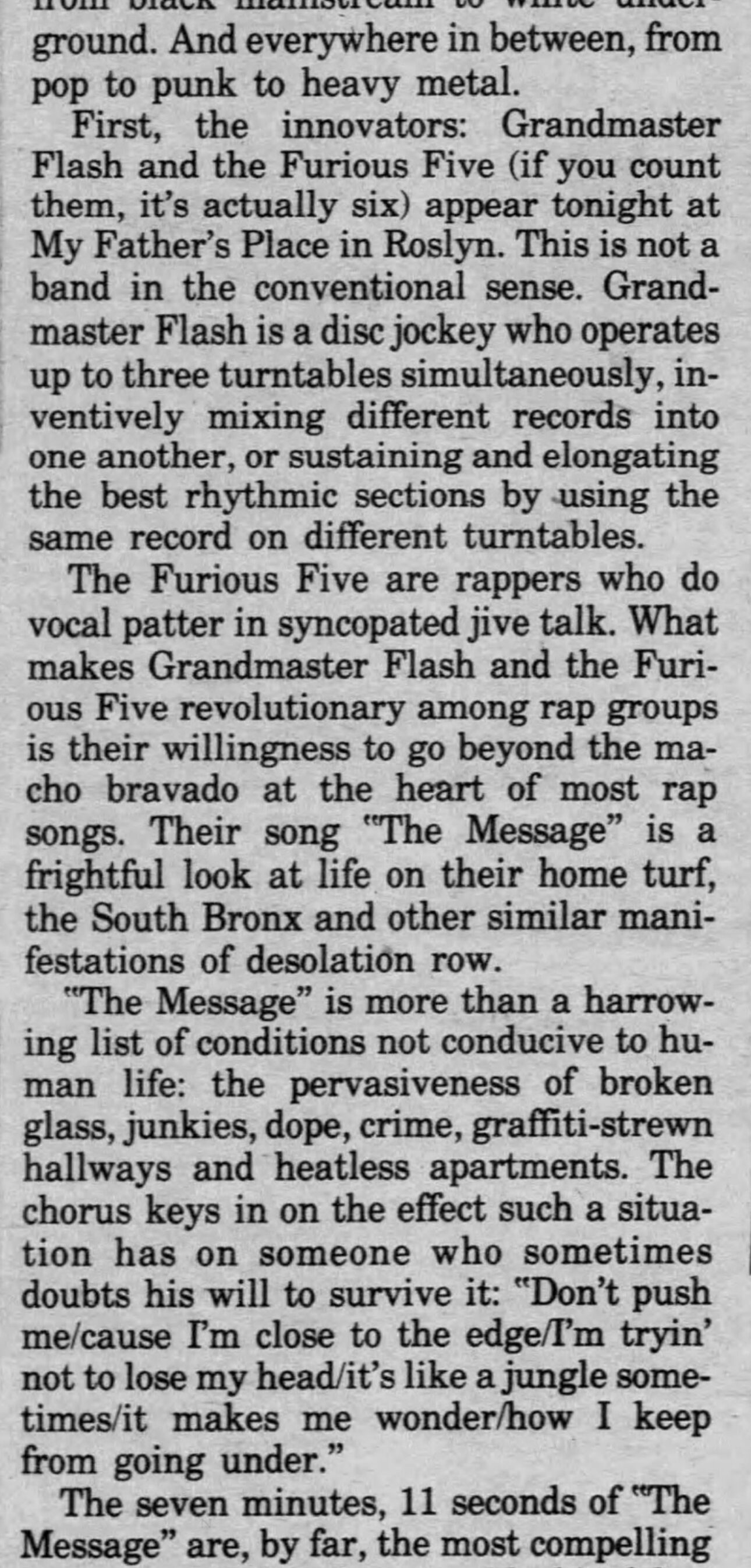
Black equivalents of Springsteen’s “Nebraska” but American radio is racially segregated so potential audience is lost
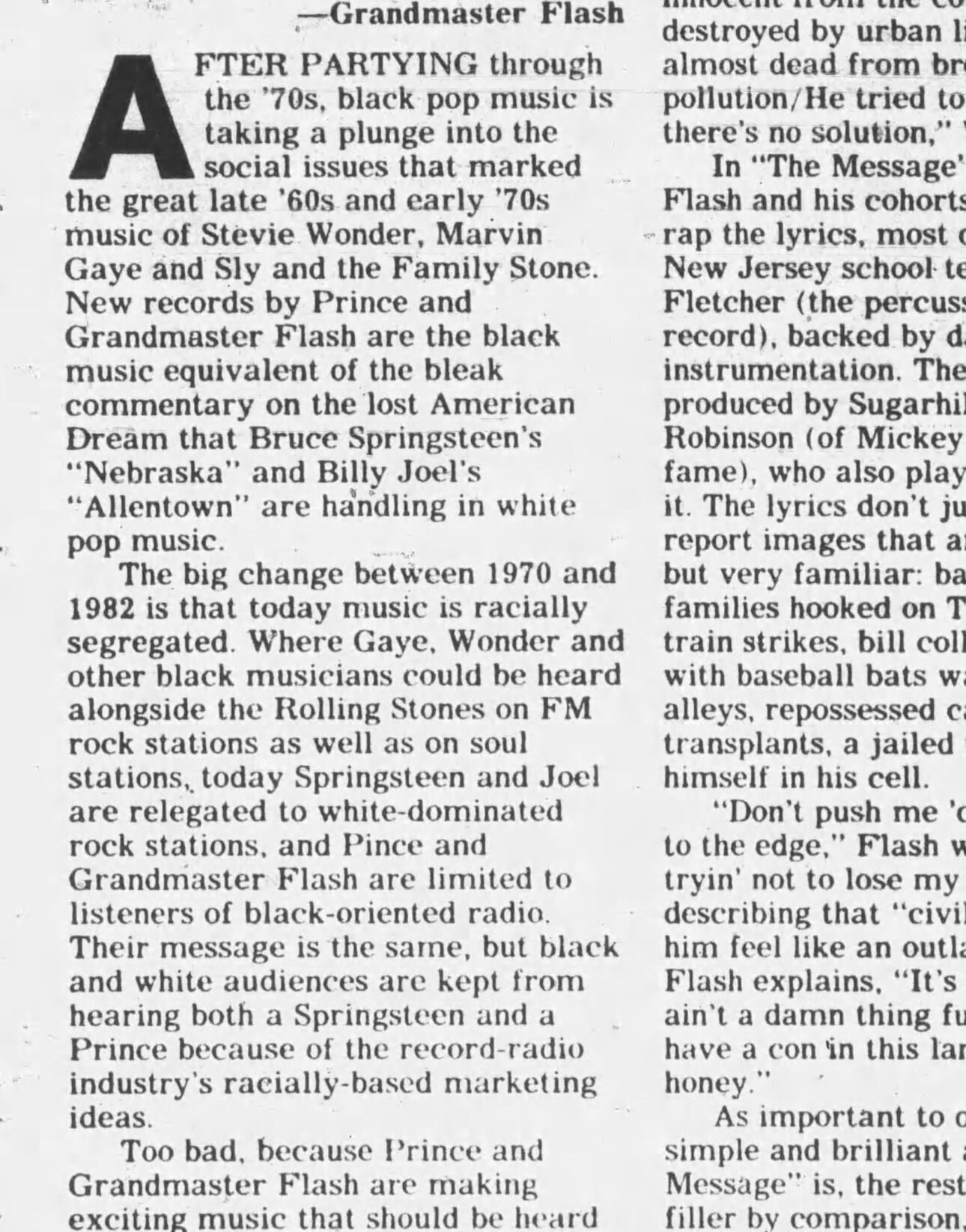
La Violencia
Mass violence on Run DMC’s ‘Raising Hell’ tour
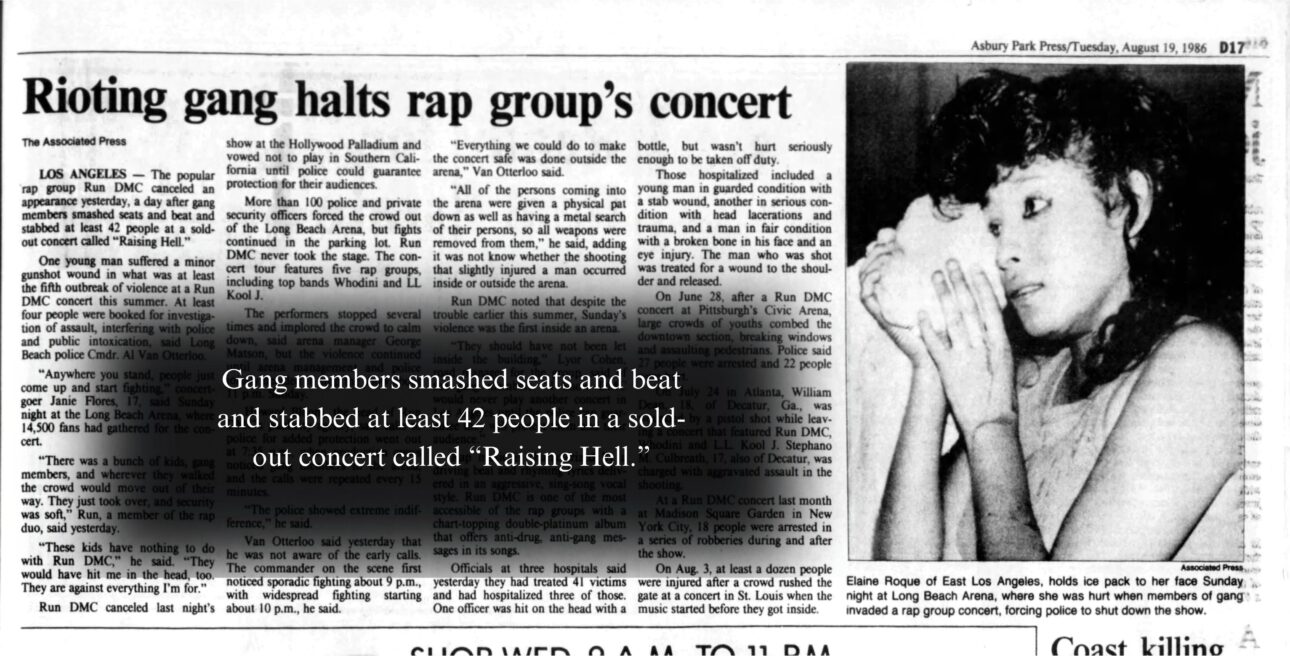
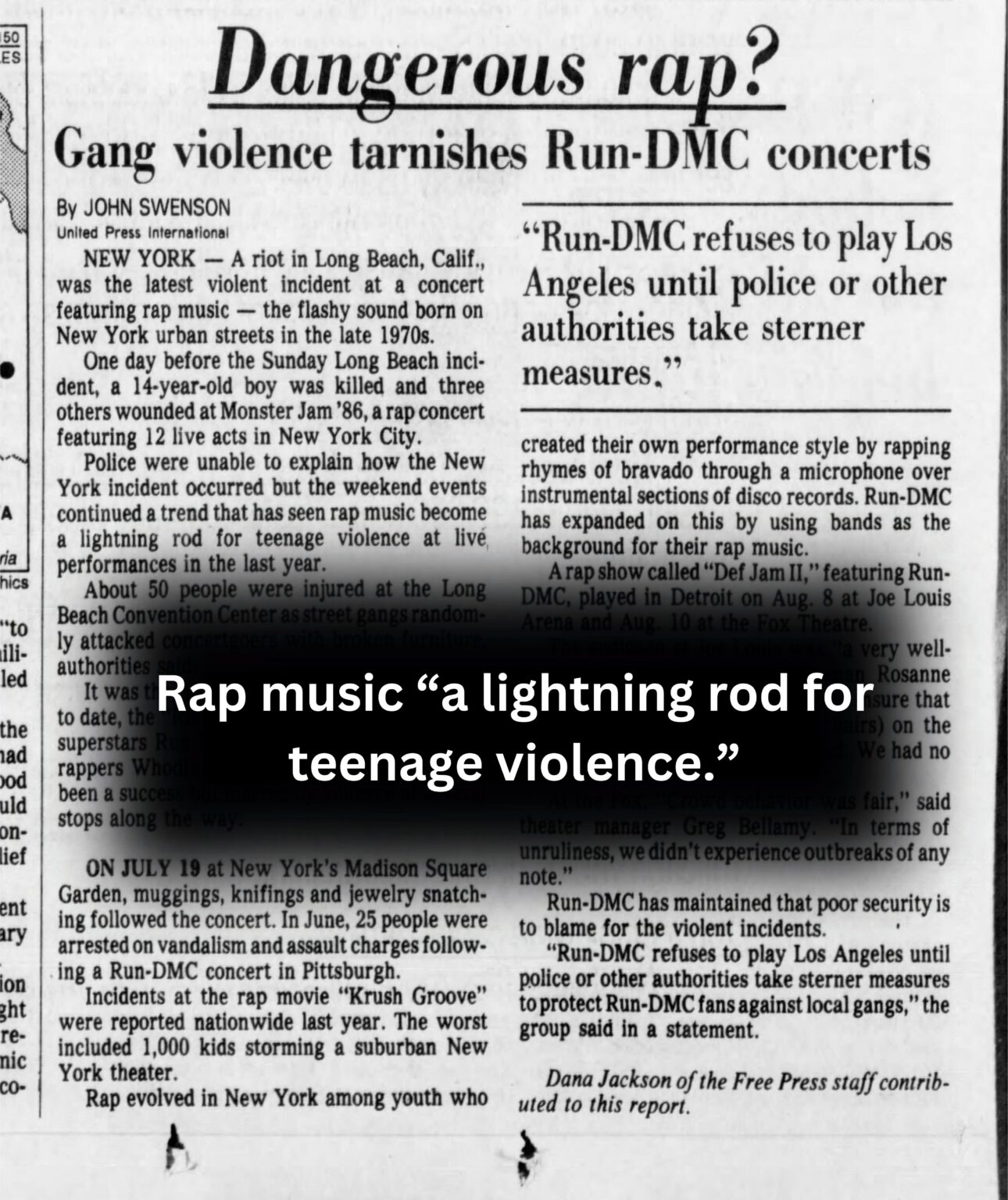
Gang members took over, says Run DMC
Crossover success tainted by bloodshed
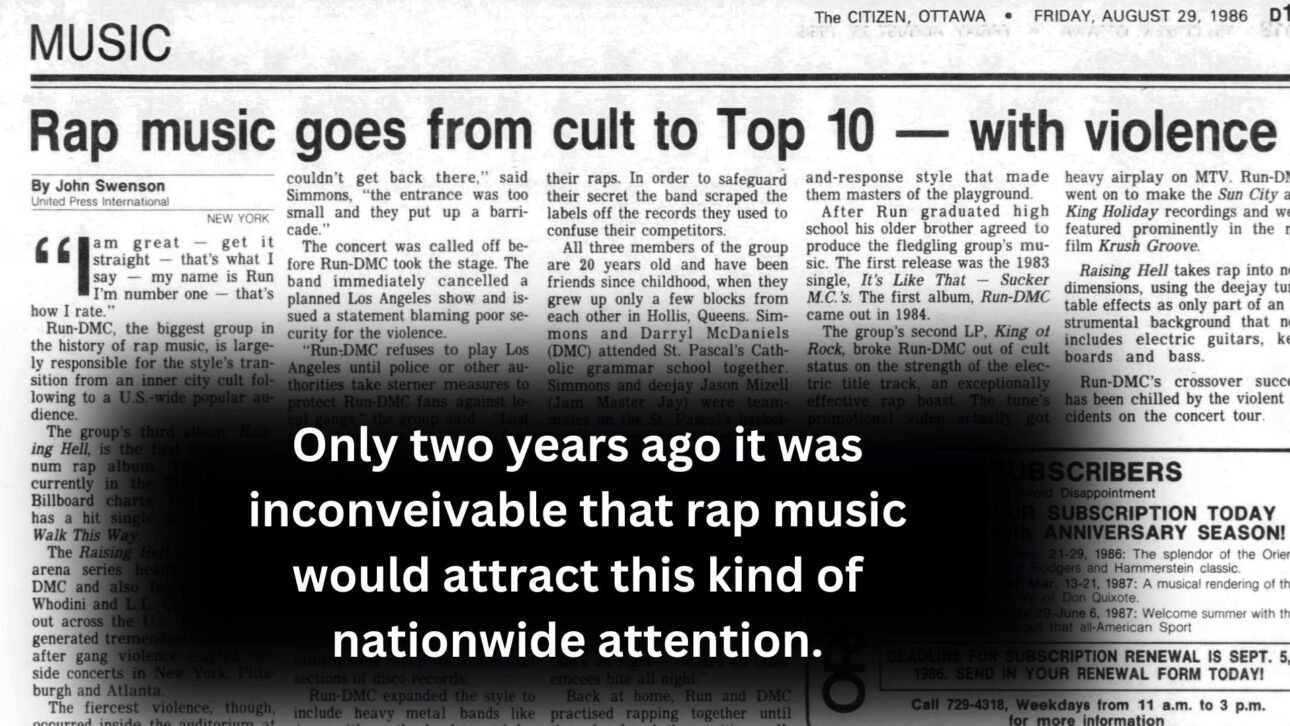
Security costs rising
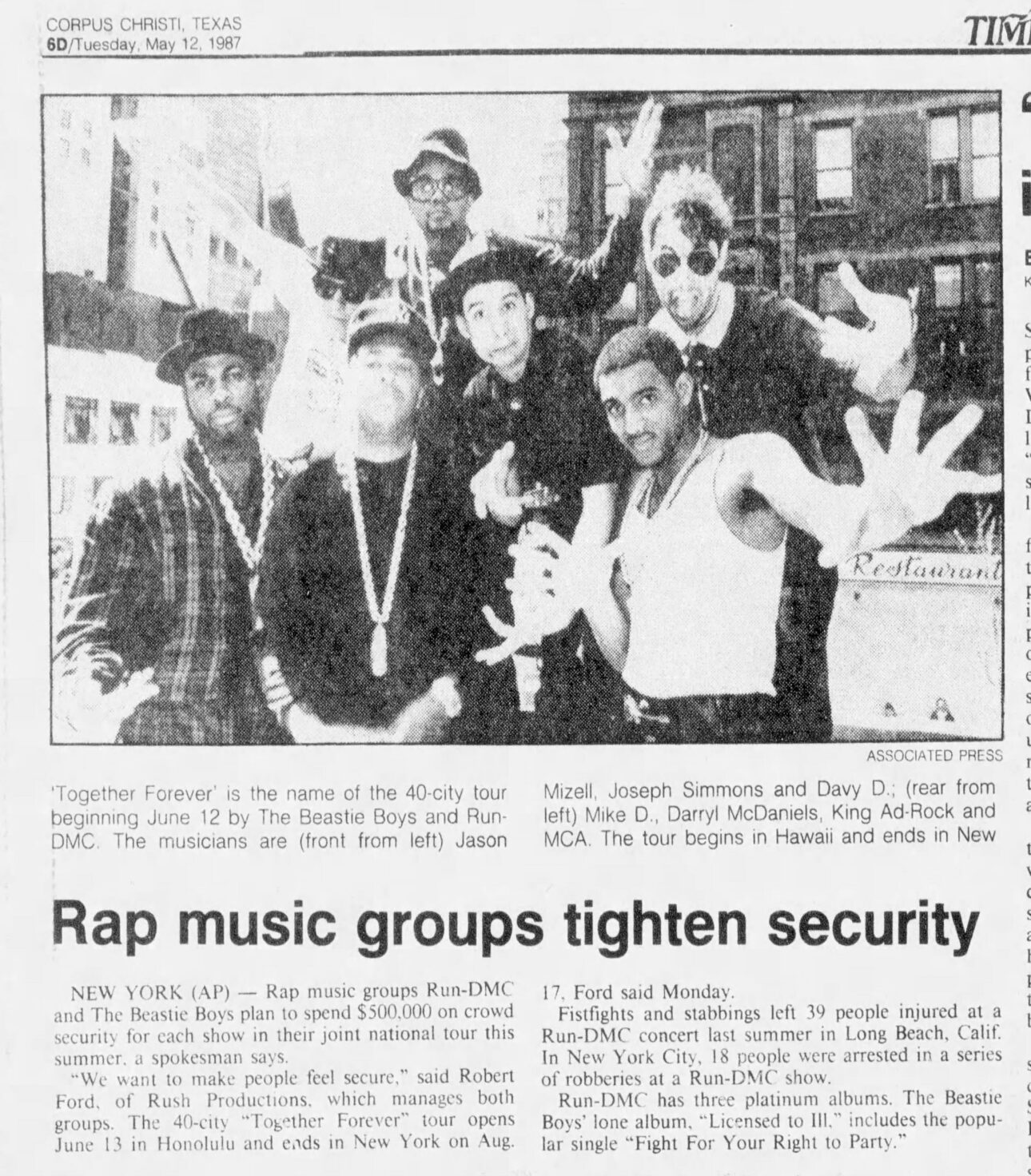
Falling stars
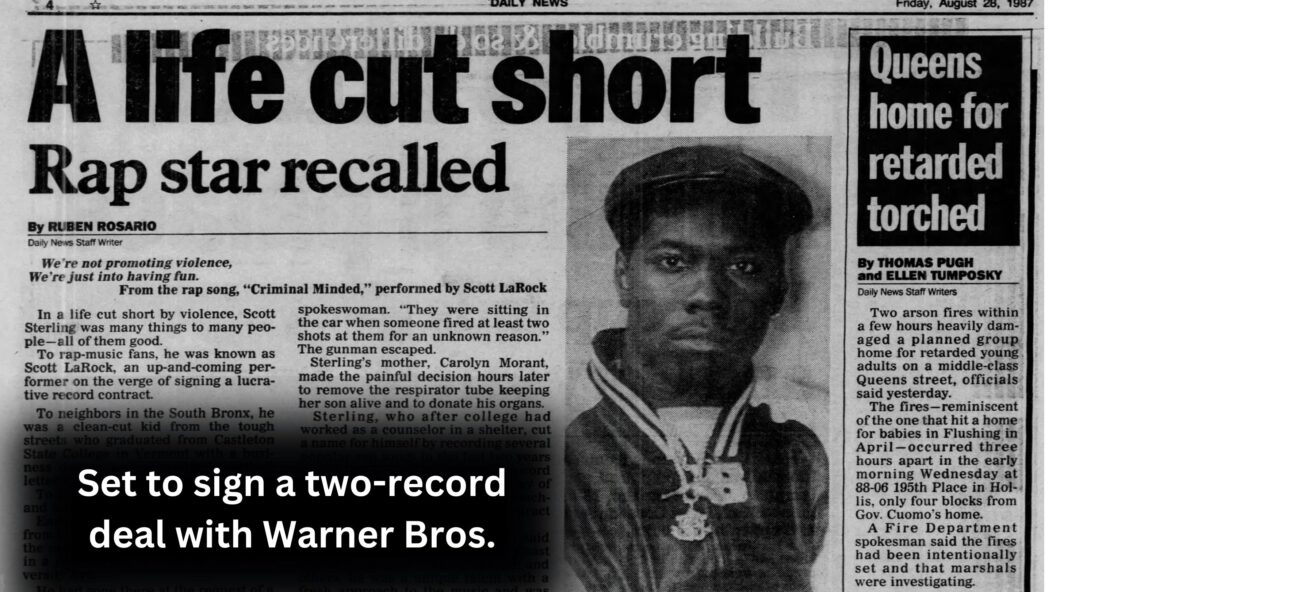
Posses up to 60-strong sweeping through; patrons with blood dripping from their slashed backs; search and destroy missions
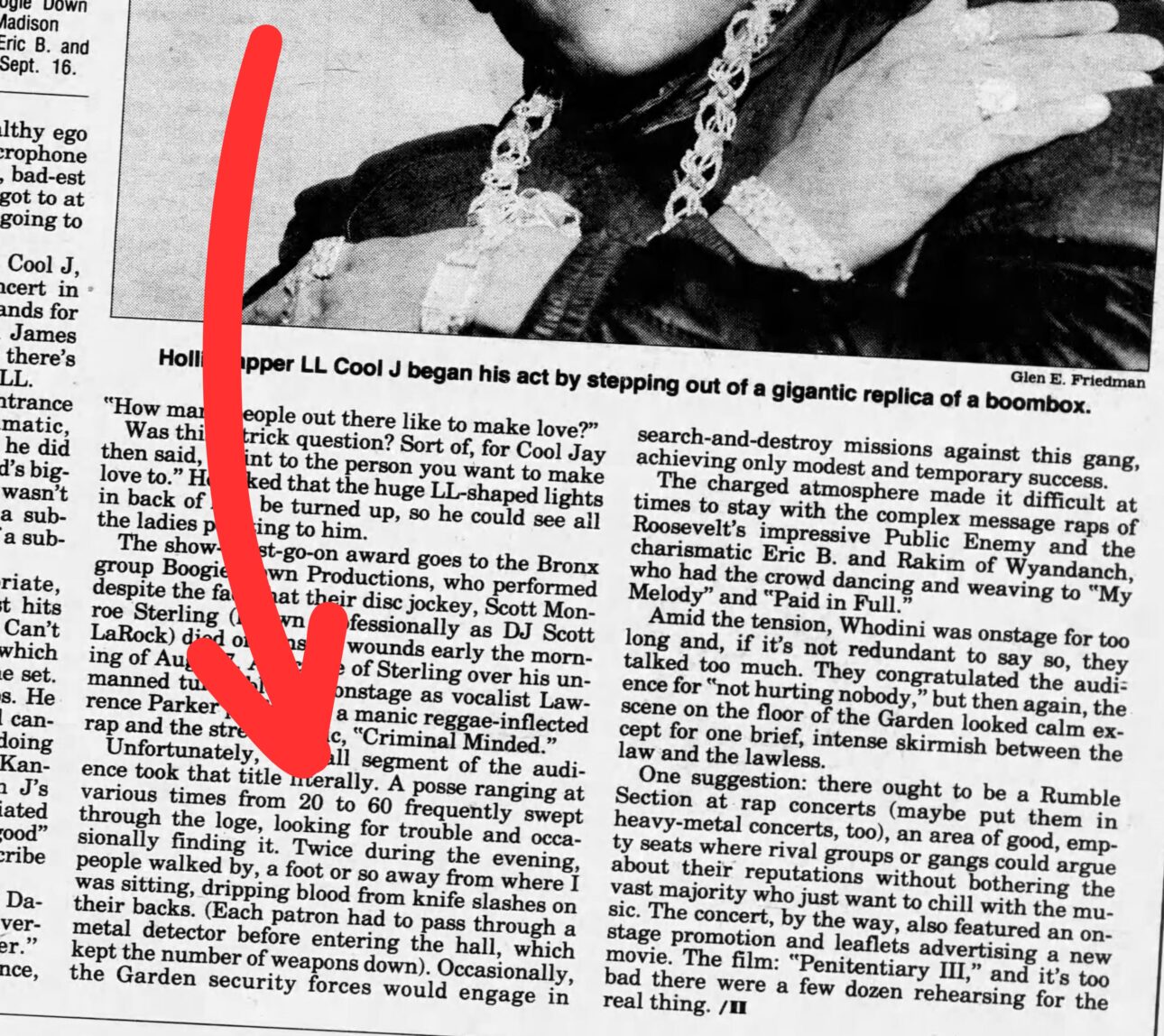
Blood in the streets in the town of New Haven
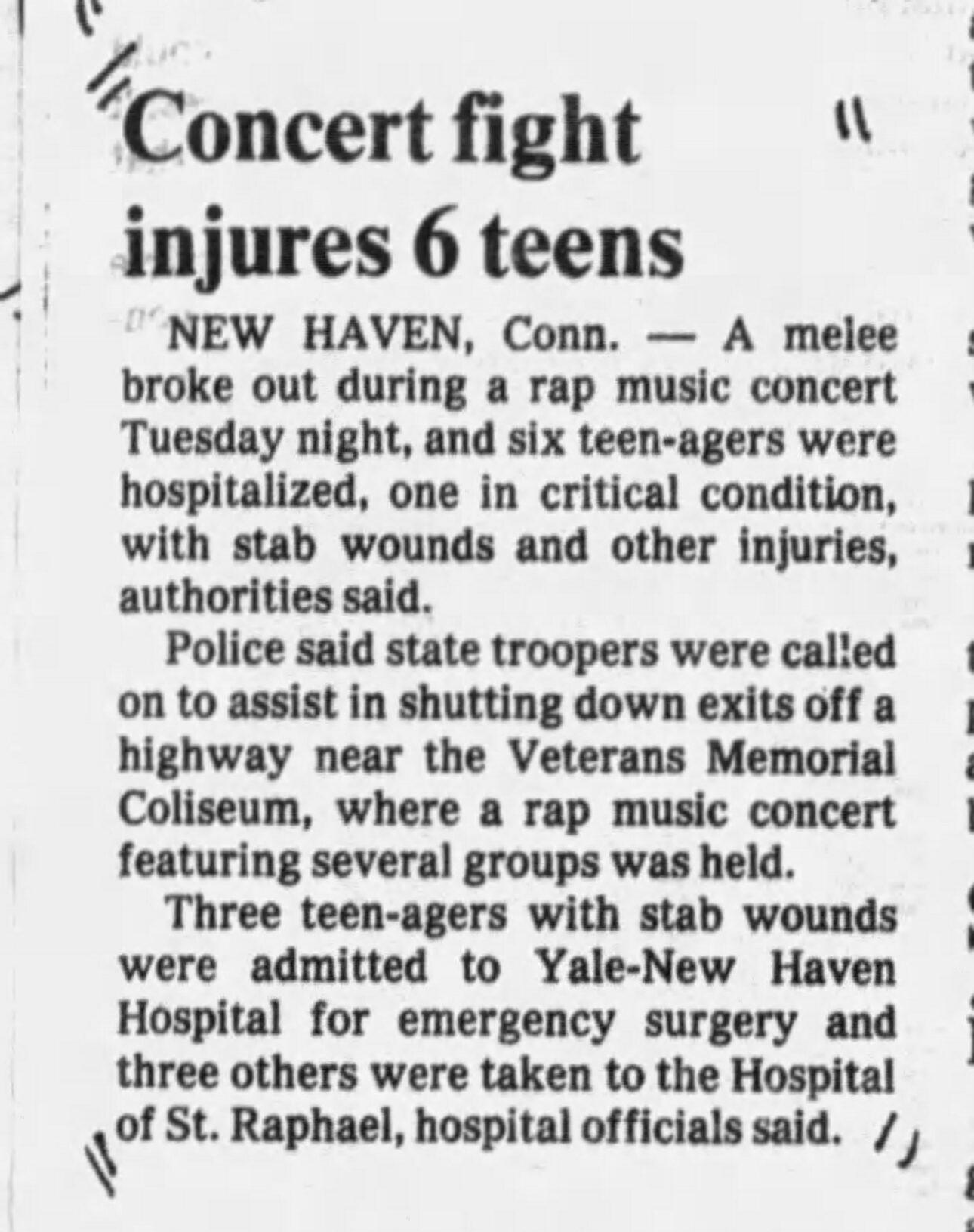
Teenage girls crushed to death at East Coast v West Coast “rap off”
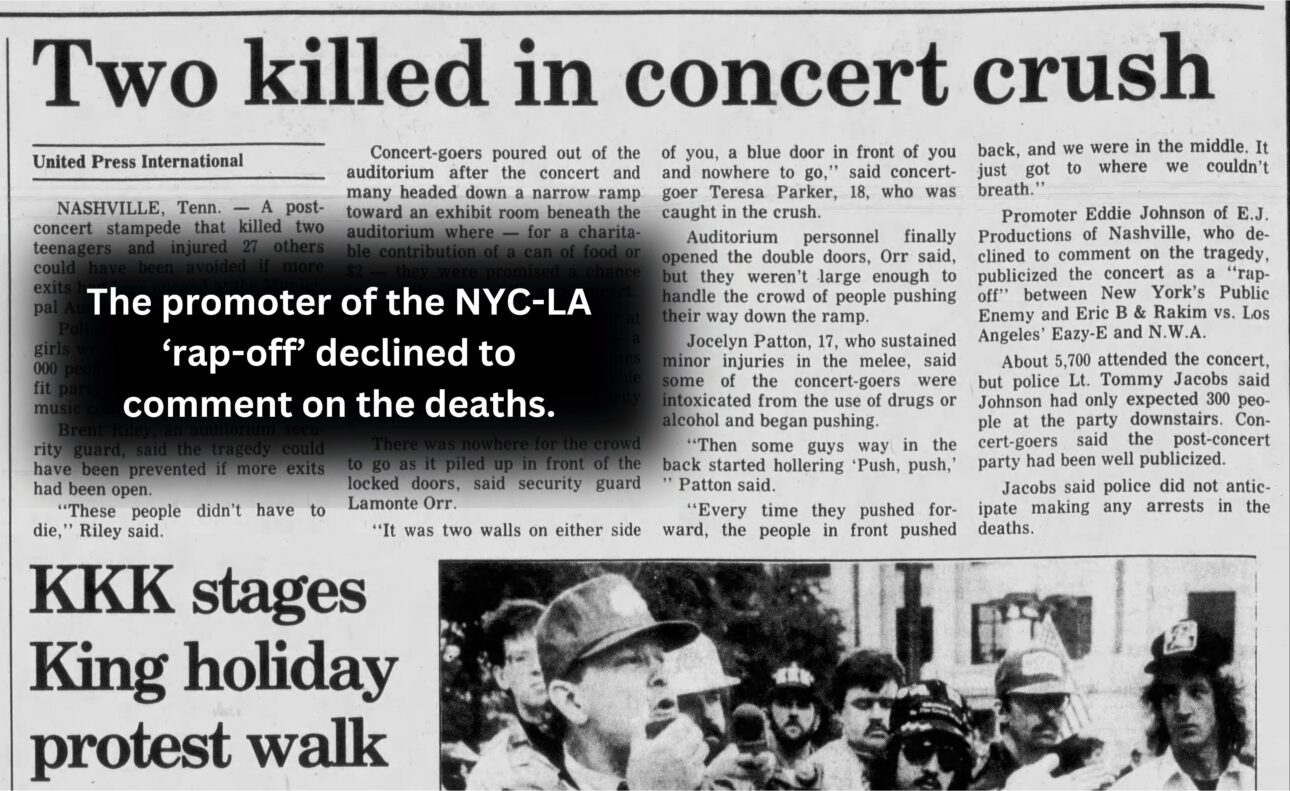
Pushback
‘The theme is a general insensitivity to human beings”
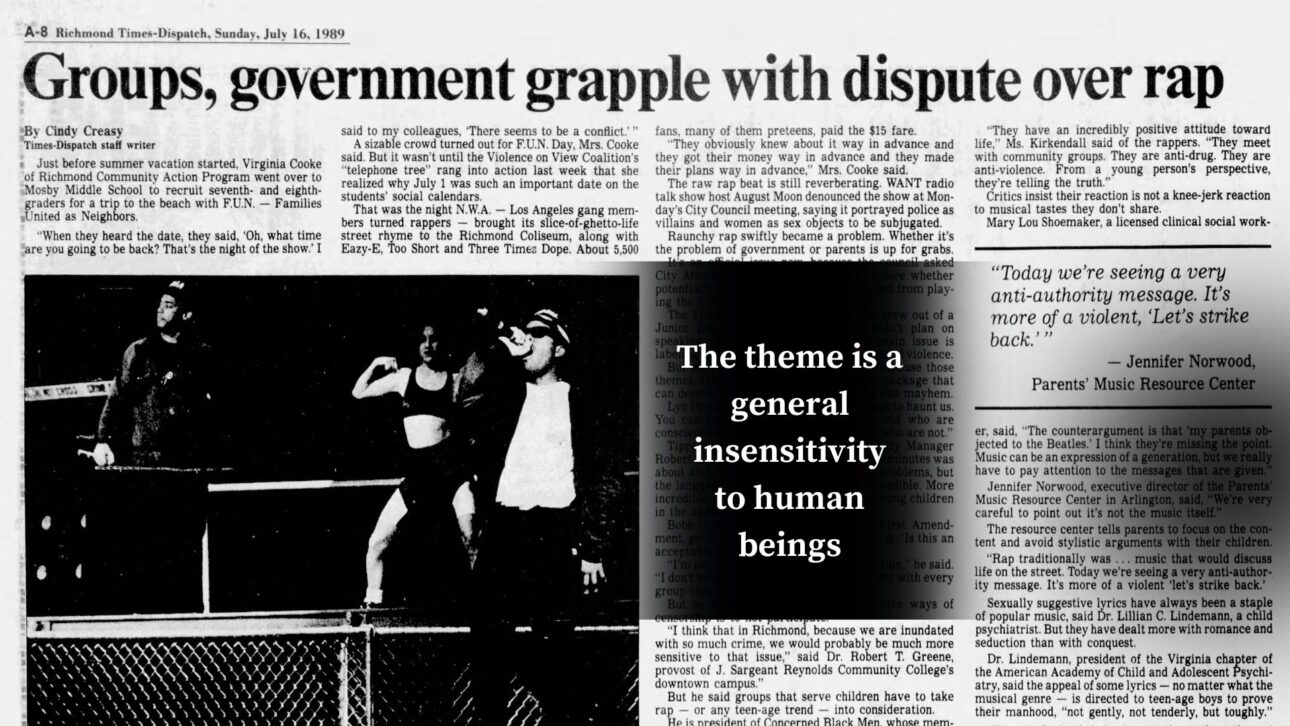
1992: Charlton ‘Moses’ Heston disses Ice-T, talks about getting his metal side-project Body Count nixed from Time Warner, and then serves some T
Body Count exits the house
